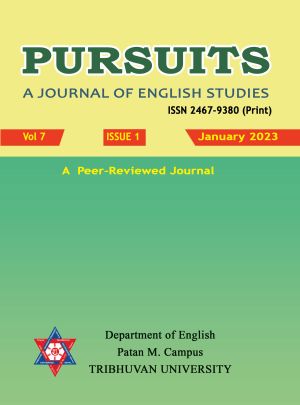Construction of Lahure Culture in Nepali Literature
DOI:
https://doi.org/10.3126/pursuits.v7i1.55370Keywords:
Gorkha, lahure, culture, oriental, literature, conventional, anti-sentimentalAbstract
The Gurkha and lahure with identical sense has gained their name and fame in western discourse. After the Anglo-Gorkha war fought in 1814-16 A. D., the hill-people of Nepal joined in British and Indian army forces and were referred to as ‘Gorkhas’ or ‘Goorkhali’or 'lahure'. The British rulers referred to them as ‘Gurkhas’ and British construction of lahure culture brought a division between lahure and non-lahure in Nepali society. It reveals that the practice of Gurkha as a product of western imperialism is still in use. The orientalist martial discourse dominates the historiography of Gurkhas. This article uses Lionel Caplan's theory that deals with the Gurkhas in the context of the western military imagination. The recruitment in military force accepted the Gurkha culture and turned their mythological character into reality to a considerable increase in Gurkha recruitment. The fact that Nepali writers and singers raised the different voices to accept and oppose the reality of lahure culture.




